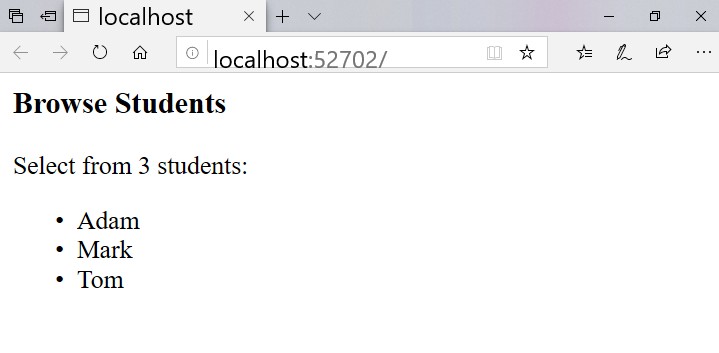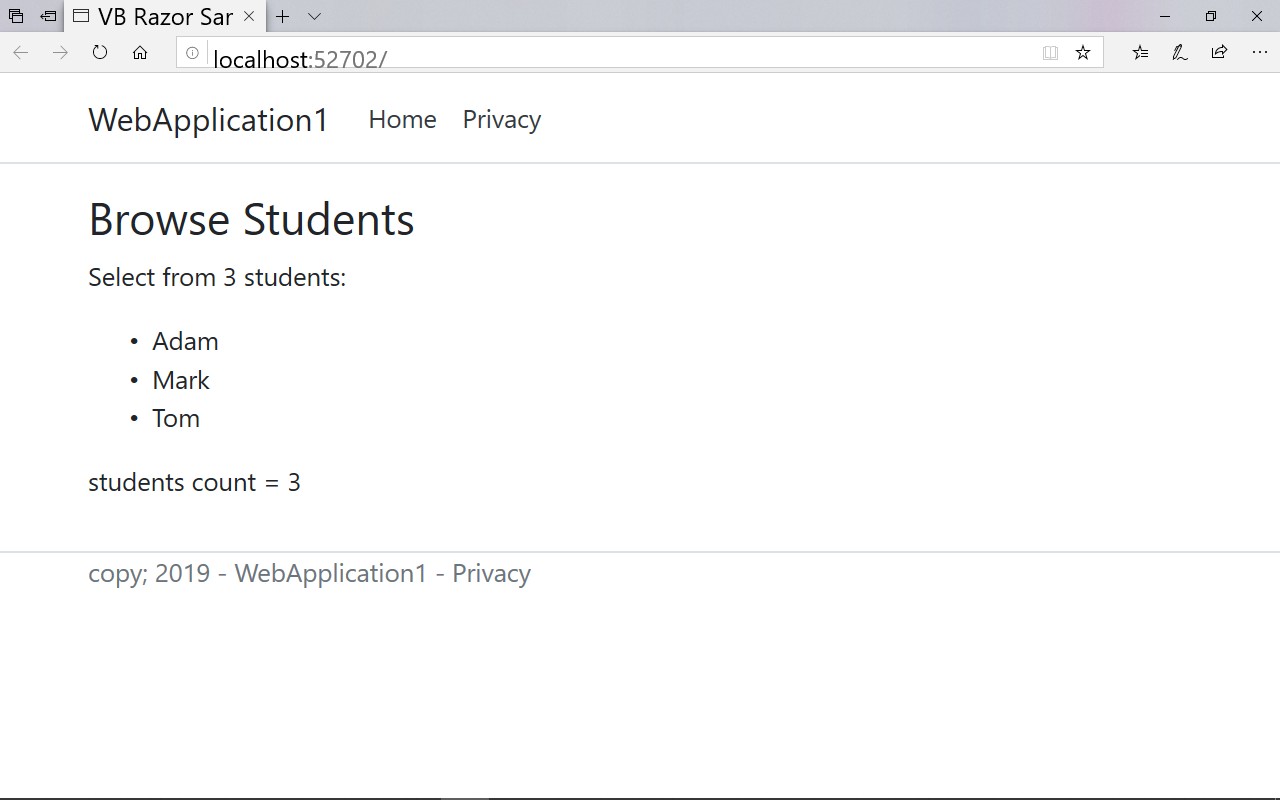Finally: A working VB.NET ASP.NET MVC Core Razor sample! https://github.com/VBAndCs/VB.NET-Razor I implemented a simple VBRazorViewEngine in the VbRazor project. To use VBRazorViewEngine in the project, I added these two statements to the Startup.ConfigureServices method:
services.AddTransient(Of IConfigureOptions(Of MvcViewOptions), VBRazor.VBRazorMvcViewOptionsSetup)()
services.AddSingleton(Of IViewEngine, VBRazor.VBRazorViewEngine)()The VBRazor is just a VB class that implements the IVBRazor Interface:
Public Interface IVBRazor
ReadOnly Property Razor As String
End InterfaceThe Razor property uses the xml literals to compose the HTML code and returns it as a string.. Example:
Imports VbRazor
Public Class IndexView
Implements IVBRazor
Dim students As List(Of Student)
Public Sub New(students As List(Of Student))
Me.students = students
End Sub
Public ReadOnly Property Razor As String Implements IVBRazor.Razor
Get
Dim x = <html>
<h3> Browse Students</h3>
<p>Select from <%= students.Count() %> students:</p>
<ul>
<%= (Iterator Function()
For Each std In students
Yield <li><%= std.Name %></li>
Next
End Function)() %>
</ul>
</html>
Return x.ToString()
End Get
End Property
End Class
To use the IndexView from the Controller, I passed it to the View method as the model data in the action method, and passed the actual model data to its constructor:
Public Function Index() As IActionResult
Return View(New IndexView(Students))
End FunctionThat’s all!! If you run the project, you will see this web page:

This was really easy, but needs more work, so I hope you start contribute to this project to make it a real productive tool! The first thing to do, it to create a VB.NET template for ASP.NET MVC Core. I had to create a C# project then convert it to VB!
The second thing to do, is to add intellisense support for html attributes in xml literals in VB!
We need to try more advanced pages with JavaScript and other components. I hope VB team give us the support wee need to make the most of xml literals.


In this proposal https://github.com/aspnet/AspNetCore/issues/8674 (please all VB.NET fans, support it), I suggested to use xml literals to implement ASP.NET MVC razor in VB.NET instead of vbhtml files, like this:
In this code, I used LinQ because I need to return a value to be embedded in the xml literal. I tried another way:
Using inline lambdas like this, makes it possible to evaluate any expression with any VB code we want, but I think this can be simplified and shortened as this:
This is more like a vbhtml razor page code! The suggestion is simply to write any vb.net code directly inside the
<%= %>marks, and use return or Yield to return the desired value that will be used in the xml literal. Return and Yield here are scoped to the Xml literal, and all what VB.NET needs to do, is to wrap all this insideWhere [Iterator] is added if Yield is used in code. Another example:
Which is a shortcut for:
I hope these proposal are taken seriously. VB.NET is too powerful and has many precious hidden treasures, and it is really unfortunate that MS decided to left VB.NET behind to save some effort and money, while VB.NET could have been saved too much time , effort and money spent to develop Razor syntax, while it is already supported in VB syntax!